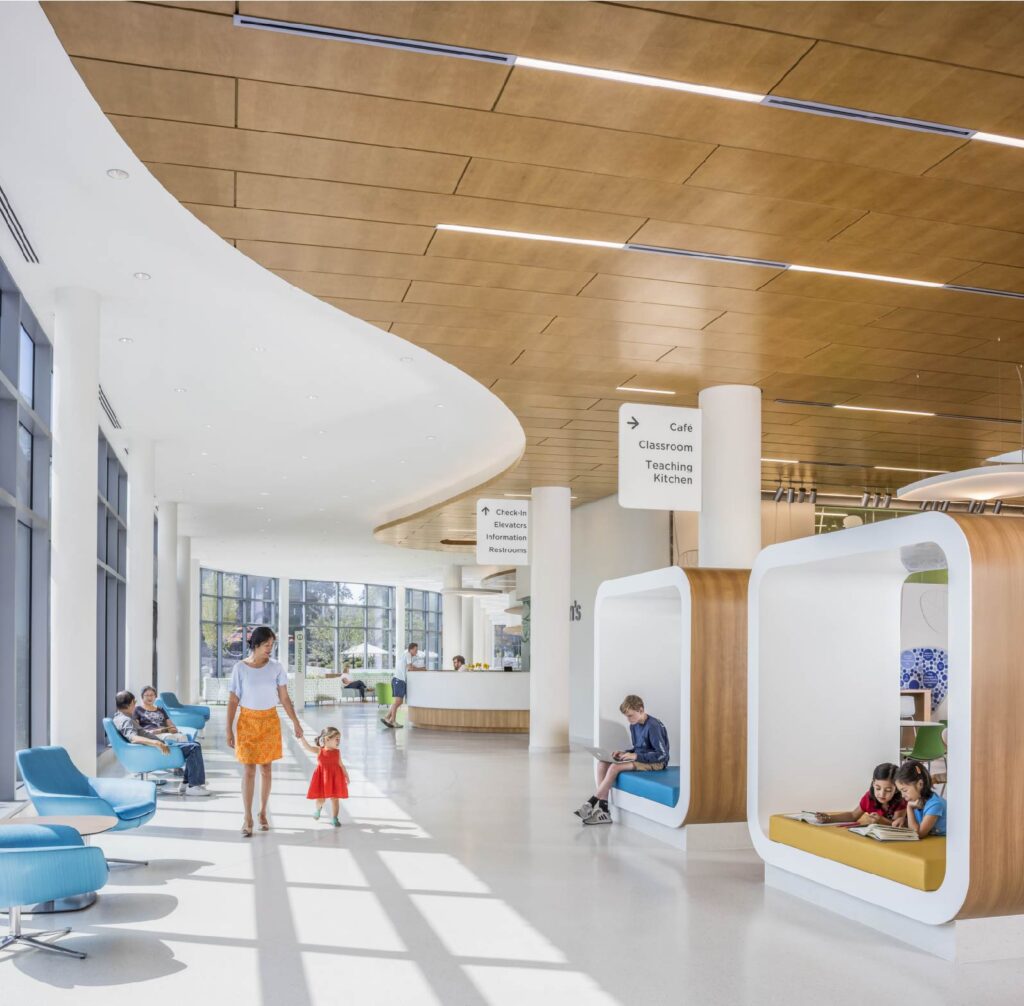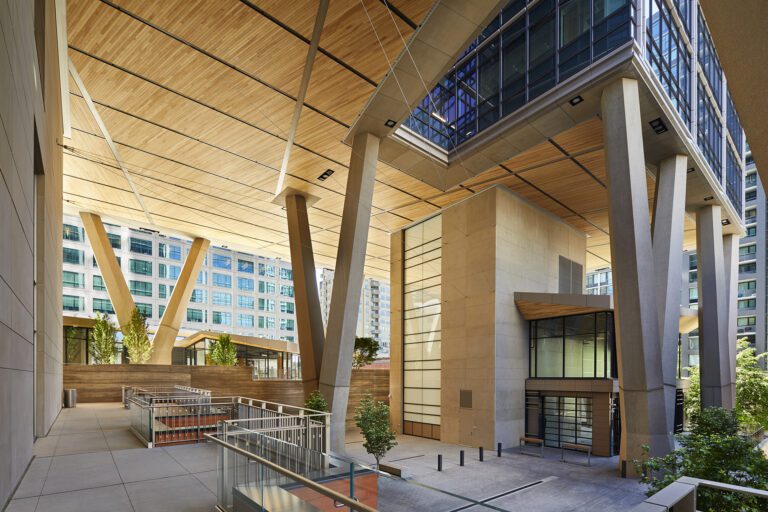Why understanding wall system costs matters
Enhancing a space with wood ceilings and wall systems elevates both design and performance. These systems bring acoustic comfort, visual warmth, and sustainability benefits. But every project leader eventually asks the same question: What will it cost?
Understanding the key drivers of wall system costs helps architects, contractors, and owners make informed decisions. Material selection, design complexity, installation methods, and long-term maintenance all contribute to the final price. With this knowledge, teams can balance budgets with design goals and avoid costly surprises.
Beyond budget alignment, knowing what affects the cost of wall systems also makes collaboration smoother. Architects can specify systems with confidence, contractors can anticipate labor needs, and owners can plan for lifecycle costs. When everyone shares a clear picture of pricing influences, projects run more predictably and deliver better value.
Material selection and its impact on wall system costs
The type of wood chosen is often the single biggest factor in determining wood wall system costs. Solid species, veneers, and engineered solutions all come with different price points and benefits.
- Solid wood offers premium aesthetics and unmatched durability. It can withstand decades of use while maintaining its character. Although it carries a higher price tag, solid wood is often selected for feature walls or executive spaces where timeless value is the priority. Learn more about cost dynamics in why solid wood costs less than veneered wood.
- Engineered wood replicates the look of solid lumber while reducing cost and weight. It is ideal for larger projects where scale matters but budgets are closely managed. Engineered wood also resists warping and dimensional change, making it dependable in environments with fluctuating humidity.
- Veneer systems maximize yield from each log while preserving the authenticity of grain. They offer a balance between sustainability and cost, making them one of the most commonly specified solutions for large-scale commercial interiors.
- Sustainably sourced wood may involve a modest cost increase due to certifications like FSC or PEFC. However, this choice positions projects for LEED, WELL, or other green certifications, often offsetting initial expense with long-term recognition and value.
Material selection is never just about price. Architects weigh aesthetics, performance, sustainability, and lifecycle durability — all of which shape final wall system pricing.
Design complexity and wall system pricing
The profile and pattern of a wall system directly affect its cost. Simpler designs with clean lines are efficient to manufacture and install, while intricate assemblies require specialized equipment and greater labor input.
- Flat panels provide a straightforward, budget-friendly option. They are easy to fabricate, install quickly, and work well across a variety of programs.
- Linear designs, including Linear Panels and Grilles, offer a modern, rhythmic aesthetic. Their modularity balances sophistication with cost efficiency, making them common in workplaces and academic settings.
- Curved wood panels, such as Curvalon or Curvatone, require more advanced manufacturing processes and careful installation. These systems achieve striking sculptural impact but increase both fabrication and labor costs.
- Dimensional systems like Cubes or Beams deliver dramatic volume overhead or across walls. While visually powerful, they involve more material and complexity, raising total costs.
Design complexity is ultimately about trade-offs. A bold design may carry higher upfront costs but create identity-defining spaces that deliver long-term value. For guidance on balancing ambition and budget, see balancing cost and design in wood ceiling panels.
How acoustic performance influences wall system costs
Acoustic performance is often a hidden but critical cost driver. Projects with specific noise control requirements need systems engineered for absorption or diffusion.
- Sound attenuation wall systems rely on perforations, micro-grooves, and slatted geometries combined with acoustic backers. These assemblies achieve tested NRC values and help meet code requirements for learning environments, offices, or healthcare facilities.
- High-performance panels, like Aluratone, integrate absorptive cores behind wood finishes. While they cost more than standard flat panels, they deliver measurable improvements in speech clarity and occupant comfort.
- Basic panels without acoustic treatments are more affordable but may not provide the same functional benefits. They are suitable for projects where acoustics are less critical.
When budgets are tight, teams may hesitate to invest in acoustic systems. But over the long term, the cost of distraction, stress, or poor communication can outweigh initial savings. This makes acoustic performance one of the smartest investments in controlling wall system costs.
Installation, labor, and overall wall system costs
Labor can account for a significant portion of overall wall system pricing. The installation method, site conditions, and level of prefabrication all influence total cost.
- Prefabricated systems reduce field labor by arriving ready to install. With pre-cut components and modular assemblies, contractors can complete projects faster and with fewer errors. Rulon’s Select-N-Ship program streamlines delivery to meet tight deadlines.
- Custom installations — such as sweeping curves, bespoke patterns, or hybrid systems — require advanced skills and longer installation timelines. While they raise labor costs, they also create signature interiors that justify the expense.
- Simplified fastening methods, like Endure Direct Attach, speed up installation while providing durable performance. This helps keep labor predictable and minimizes surprises in the field.
Regional labor rates also play a role. Markets with higher wages or fewer experienced installers may add to total wall system costs. Coordinating with suppliers early ensures teams can plan for both material and labor realities.
Maintenance, durability, and lifecycle value
Initial wall system costs tell only part of the story. The real test comes over decades of use. Durable systems may cost more upfront but reduce repair and replacement needs, saving money over time.
- Engineered for longevity, products like Endure™ Linear withstand wear in high-traffic environments.
- Modular replaceability means damaged tiles or panels can be swapped out individually rather than replacing entire walls.
- Low-maintenance finishes resist stains, scratches, and fading, requiring only periodic cleaning and inspection.
When evaluating the cost of wall systems, owners should consider lifecycle performance as much as first costs. Durable systems protect investment while keeping maintenance predictable.
Sustainability and its role in wall system costs
Sustainability increasingly shapes specification decisions. While eco-certified products can carry slightly higher costs, they add value by supporting certification pathways and signaling environmental responsibility.
- FSC-certified wood ensures responsible sourcing, reducing environmental impact.
- Efficient veneer use maximizes material yield from each log, lowering overall resource consumption.
- Modular construction reduces waste and simplifies end-of-life reuse or recycling.
Rulon’s documented sustainability practices help architects and owners plan systems that align with LEED, WELL, and other frameworks. This transparency reduces risk and positions projects for long-term success.
Sustainability also influences occupant perception. Tenants and employees increasingly prefer spaces with visible natural materials, which enhances comfort and connection to nature. This intangible value reinforces why investing in sustainable systems is not simply a cost but a benefit.
Market and regional influences on wall system pricing
External factors often shape project budgets as much as design choices.
- Material availability: Long lead times or regional shortages can drive up costs.
- Transportation: Sourcing from distant locations adds freight expenses, particularly for large commercial projects.
- Local labor rates: Skilled labor availability varies, with urban markets often commanding higher wages.
- Market demand: Trends for specialized finishes or high-performance acoustics can increase pricing where demand outpaces supply.
Working with a trusted supplier ensures flexibility. Rulon’s diverse product catalog includes multiple system families at different price points, allowing teams to maintain design intent even under market pressures.
FAQs about wall system costs
What affects wall system costs the most?
Material type, design complexity, acoustic performance, and labor account for the largest share of wall system costs.
Are wood wall systems more expensive than alternatives?
Wood wall systems often cost more upfront than drywall or synthetic options but deliver superior aesthetics, acoustics, and sustainability benefits that justify the investment.
How much do wood wall systems cost per square foot?
Pricing varies by material and design. Veneer systems may start at lower price ranges, while solid or acoustic systems command higher per-square-foot costs.
Can wall system costs be reduced without sacrificing quality?
Yes. Prefabricated systems, modular assemblies, and quick-ship programs like Select-N-Ship reduce labor and material waste while maintaining quality.
Do sustainable products increase wall system costs?
Eco-certified products may have modestly higher upfront pricing but deliver lifecycle savings and certification benefits, adding long-term value.
How does project scale affect wall system pricing?
Larger projects often achieve economies of scale, lowering per-square-foot costs. However, unique or complex designs can offset those savings.
What role does maintenance play in wall system costs?
Durable, low-maintenance systems may cost more initially but reduce replacement and upkeep expenses, making them more economical across the building’s lifecycle.
Planning for wall system costs in your project
Budgeting for wood ceilings and wall systems requires more than a price-per-square-foot calculation. It involves weighing material, design, installation, sustainability, and lifecycle performance together.
By aligning design goals with budget realities, teams can achieve interiors that look exceptional, perform acoustically, and support sustainability benchmarks. With careful planning, wall systems become investments that deliver value far beyond first costs.
For inspiration, explore the project gallery or contact the team for tailored support on your next project.




